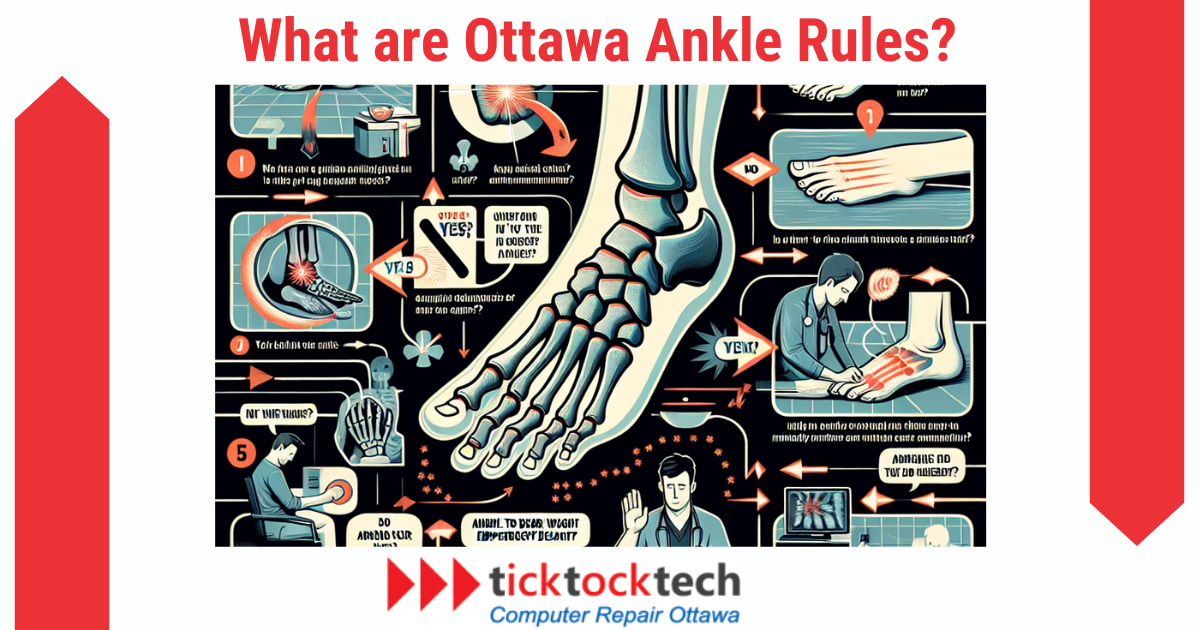Injuries around the leg areas are very common, which might lead to broken or fractured bones. This is common among men, especially the ones that love football, or athletic sports. Ankle sprains, for example, are more likely among athletes who play football, soccer, basketball, or netball. A fracture (break) of one or more ankle bones can develop due to a fall or a violent blow to the joint. To diagnose or solve issues like this, X-rays and imaging might be required. However, this might be unnecessary, and time-wasting. The Ottawa ankle rules were developed by physiotherapists to assist in identifying the necessity for radiographs or imaging in acute ankle injuries. Let’s explore what it is about
What is the Ottawa Anke Rule?
The Ottawa Ankle Rule is a simple and reliable method for determining whether someone with an ankle injury needs an X-ray to check for fractures. This regulation was devised in reaction to the large number of unnecessary X-rays, which not only cost money but also waste time. It helps doctors to make faster decisions. It is essentially a set of parameters used by clinicians to decide if an ankle or midfoot fracture poses a major risk. When utilized correctly, this rule is approximately 97.5% effective in identifying injuries that require an X-ray, potentially reducing the number of these tests by around 35%.
In emergency rooms, ankle sprains are rather common. Before these limitations were introduced, doctors would X-ray almost every injury, even if only a small portion indicated a severe fracture. The Ottawa Ankle Rules aim to eliminate unnecessary X-rays. Studies back up the utility of these ideas, proving that they may realistically ensure that a fracture is not ignored while also lowering the need for X-rays by 30-40%. If a patient does not display any of the basic signs of a fracture as defined by these recommendations, their odds of fracture are lesser
How are the Ottawa Anke Rules Applied?
The Ottawa Ankle Rules are a useful tool for medical practitioners to assess if X-rays are required to diagnose fractures in the ankle or foot.
Quick Check for Ankle Injuries.
When analyzing an ankle injury, an X-ray is used if the patient has pain in the ankle area and exhibits particular indications such as soreness at the rear end of the tibia or fibula or difficulties bearing weight quickly and in the emergency department.
Evaluating foot injuries
An X-ray is recommended for foot injuries if there is pain in the midfoot and soreness at the base of the fifth metatarsal or navicular bone, or if the patient is unable to bear weight immediately after examination.
When to Use Caution.
These regulations only apply to some. Exceptions include pregnant women and individuals who are unable to be thoroughly examined owing to other injuries or ailments. They are highly effective in children over six but are less obvious in younger children.
How to apply the rules effectively.
Examine the bottom section of the tibia and fibula.
Pay attention to pain at the medial malleolus.
Use these regulations for patients over the age of 18.
After the examination, patients should be given advice and advised to return in approximately a week if there is no improvement. This strategy ensures that X-rays are only performed when necessary, enhancing patient care and conserving costs.
Medical Benefits of the Ottawa Ankle Rules
Implementing the Ottawa Ankle Rules provides major medical advantages. These recommendations primarily assist in reducing the amount of unneeded X-rays, hence lowering radiation exposure for patients. This not only protects patient health but also maximizes the utilization of medical resources, resulting in more efficient patient care.
More on Health: AI in Healthcare: How Artificial Intelligence is Used in Healthcare
Furthermore, the Ottawa Ankle Rules simplify the diagnostic procedure. By determining when an X-ray is required, they aid in the early diagnosis and treatment of fractures. This effective technique allows for speedier decision-making, shorter wait periods, and faster treatment for individuals who require immediate care.
The implementation of these guidelines also increases patient satisfaction. Patients benefit from fewer unneeded treatments, which reduces stress and discomfort, resulting in a more favorable healthcare experience. Furthermore, the Ottawa Ankle Rules establish precise standards for examination. It also increasing uniformity and precision in the diagnosis of ankle and foot problems.
In conclusion, the Ottawa Ankle Rules are a useful tool for emergency assessment of ankle and foot injuries. Their appropriate usage assures the most effective use of medical resources. Also, it avoids needless radiation exposure, and enhances patient care and satisfaction.
Take Away
In conclusion, the Ottawa Ankle Rules are a vital, efficient tool for medical professionals assessing ankle and foot injuries. They significantly reduce unnecessary X-rays, minimizing radiation exposure and streamlining patient care. These rules ensure accurate, prompt diagnoses, leading to quicker treatments and enhancing patient experiences. Overall, their application in emergency settings showcases an effective, resourceful approach to healthcare. It provides a safer, more satisfying journey for patients seeking urgent medical attention for ankle-related injuries.

